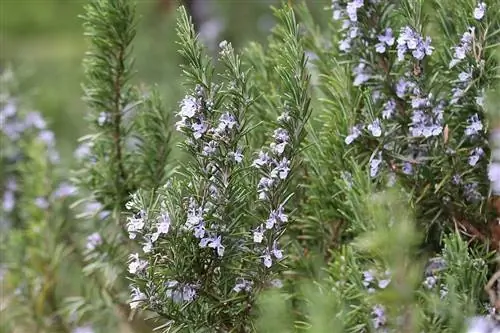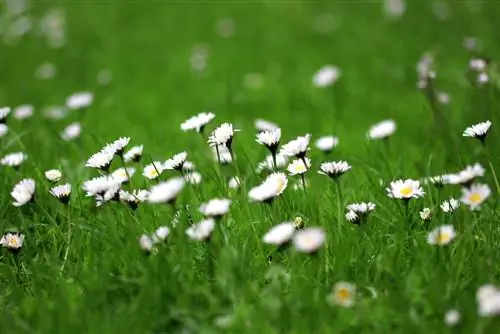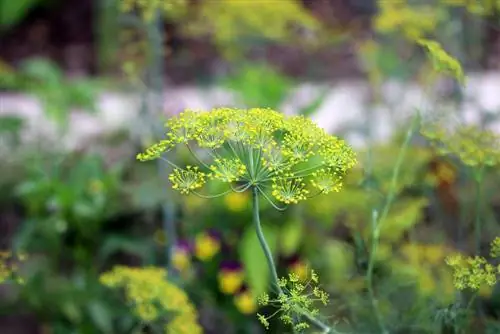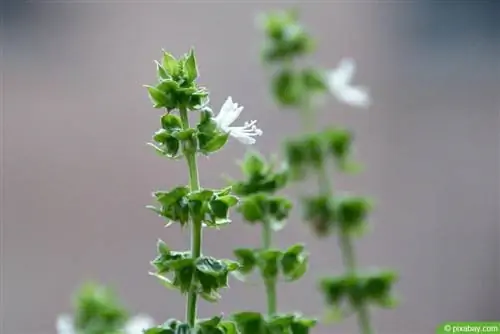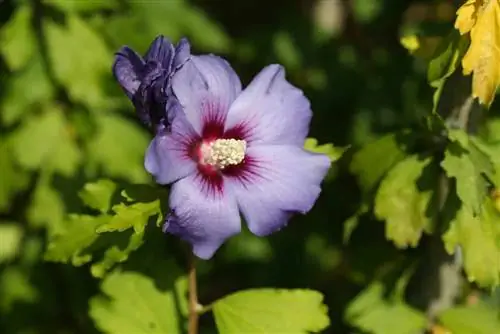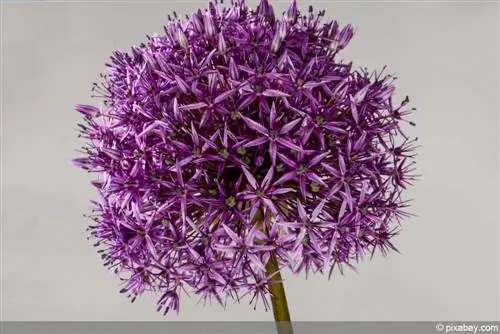- Author admin [email protected].
- Public 2023-12-17 03:39.
- Last modified 2025-01-24 12:45.
When the rosemary blooms, it fascinates with its colors and becomes an eye-catcher in the pot and bed.
Edible or not?
Many other spice and food plants become intolerable or at least inedible once they bloom. However, this is not the case with Rosmarinus officinalis. Quite the opposite. In addition to the widespread use of the needles - whether fresh as twigs, dried or ground - the individual flowers can also be consumed completely safely.
The taste
The aroma of rosemary flowers is similar to that of the more well-known needles. However, it is much more reserved and finer, as the flowers lack the strong and distinctive resin of the leaves. The aroma of rosemary flowers quickly disappears, especially when combined with dishes with an intense taste of their own. Therefore, their use is neither well known nor widespread.
Uses
Used in the right context, rosemary flowers also help to create a fine and subtle rosemary aroma. Since this evaporates quickly when cooking, other uses for the flowers have become established:
- By adding to coarse table s alt as rosemary s alt
- Pure and fresh as an edible decoration on cheese platters, desserts etc.
- As a fine note in salads
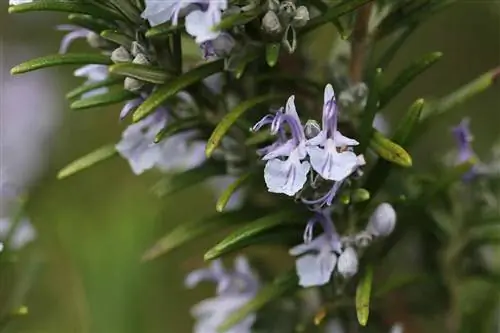
How to harvest?
The easiest way to harvest rosemary flowers is to remove them together with the associated rosemary branch. Especially if you want to use both anyway, the branch can simply be broken off or cut and later separated into flowers and needles in the kitchen. Alternatively, you can carefully twist off the individual flowers directly on the bush and continue to use them without damaging the branch.
Tip:
As we all know, the eye eats with us. So why shouldn't savory rosemary dishes prepared with the twigs also be decorated with a delicate purple rosemary flower?
How to preserve?
In contrast to rosemary needles, the flowers are very delicate and fall apart quite quickly. Normal drying in a dry and warm place usually produces unsatisfactory results. Therefore, support the drying process in a controlled manner in order to continue to obtain attractive and long-lasting flowers:
- Line the baking tray with baking paper
- Spread the flowers individually on the baking tray
- Dry the flowers in the oven at 30 degrees Celsius for around 30 to 45 minutes using top and bottom heat
- Let the flowers cool and store in a dark and airtight place
ATTENTION:
The small flowers are lightly swirled in a convection oven and spread away from the baking tray. Therefore, select top and bottom heat without the air movement of the circulating air level. Because of the low moisture from the flowers, the removal occurs to a sufficient extent even without air movement.

